
the member magazine for Riverbanks Zoo and Garden | November - December 2022
Volume XLI, Number 6

Riverbanks is published six times a year for members of Riverbanks Society by Riverbanks Zoo & Garden, Columbia, South Carolina.
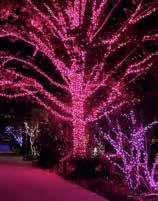
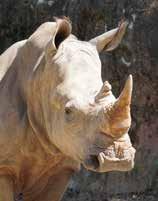
Riverbanks Park Commission
Jan Stamps, Chair
Alana Williams,
Mike Velasco,
Cliff Bourke, Secretary
Robert G. Davidson
Jeffrey T. Reeves
Deneen Shockley
Riverbanks Society Board
Stephanie R. Jones, President
Tristan K. Weinkle, DVM, DACVIM,
Cecilia Fournil, Treasurer
Deans Fawcett, Secretary
J. Stuart Moore, Immediate
Emily Bedenbaugh
A. Mattison Bogan
Sharon W. Bryant
Patti Embry-Tautenhan
James Herlong Denise Gunter Hudson
Wes Jackson Sarah Kirby Shelby Kay Leonardi
Sarah Bovaird Locke
Donna Longo
Lindsey Miles
Matt Mungo
Andrew Reed Richard Slater Dawn Staley
President
President
Sheila M. Willis Riverbanks Executive Leadership Team
Thomas K. Stringfellow, President & CEO
Christie Vondrak, Chief Administrative Officer
Lochlan Wooten, Chief Operating Officer
Rachael Bashor, Vice President of Mission Engagement
Ashley Harris, Vice President of Finance
Monique Jacobs, Vice President of Advancement
Riverbanks Senior Staff
Brian Blankenship, Director of Safety & Security
Andy Cabe, Director of Horticulture

John Davis, Director of Animal Care & Welfare
Kevin Eubanks, Director of Guest Services
Eric Helms, Director of Construction & Planning
Tracy Hughes, Director of Human Resources
Stacy MacGregor, Director of Marketing
Al Nelson, Director of Facilities Maintenance
John Thompkins, Director of Information Technology
Martha Weber, DVM, Director of Animal Health
Sean Foley, Curator of Herpetology
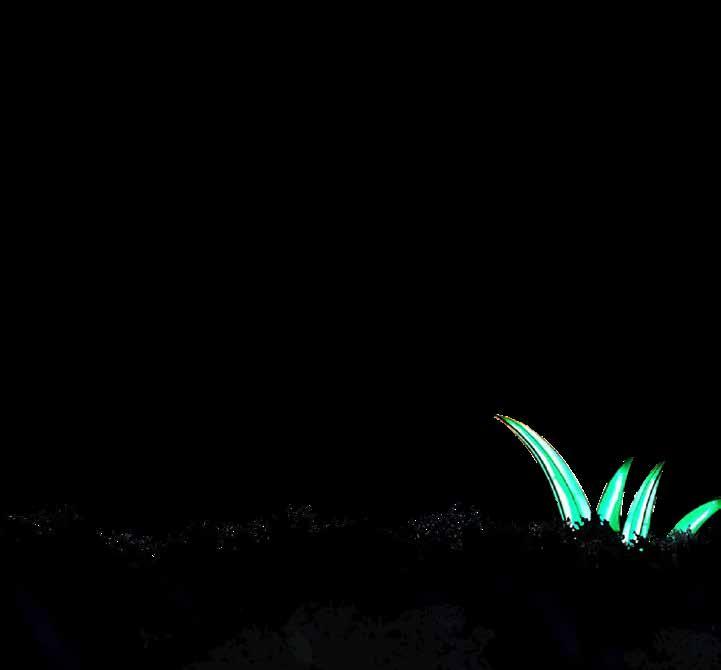
Colleen Lynch, Curator of Birds
Greg Peccie, Curator of Mammals
Jennifer Rawlings, Aquarium Curator
Subscriptions to Riverbanks are $24 per year. Members of Riverbanks Society are entitled to one free subscription along with free admission and guest passes, discounts at Zoo & Garden gift shops, invitations to special events and much more. To subscribe to Riverbanks or to join the Society, visit riverbanks.org or call 803.779.8717 and press 1.
Riverbanks Magazine
Editor - Monique Jacobs
Design Direction and Layout - Majken Blackwell
Contributing Design - Taylor Willis
Contributors - Rachael Bashor, Codyrose Bowden, John Davis, Casey Fissel, Josh Isenhoward, Jennifer Rawlings, Melodie Scott-Leach, Amanda Schlegel, Martha Weber

Contributing Photographers - Larry Cameron, Lynn Hunter Hackett, Michael Jones
Cover Photograph - Chestnut-backed thrush by Larry Cameron
CONTENTS CONNECT. Director’s View .................................................................................. 1 A message from the President & CEO Animal Spotlight ............................................................................. 14 Meet one of the Zoo’s residents In the Know .....................................................................................20 Insider “tails” and tidbits ACT. Welcome Home .................................................................................2 What is takes to create animal habitats Digging Deeper................................................................................. 12 Tips from the experts to help grow your garden Rounds with the Vet ........................................................................ 18 Animal health care on the move IMPACT. Into the Wild...................................................................................... 6 Saving species locally, regionally and around the world Keeper Corner ................................................................................. 16 Caring for the animals, caring for our planet Mission Possible ................................................................................ 8 The people, partners and programs behind the Riverbanks mission Riverbanks Zoo and Garden is located at 500 Wildlife Pkwy, Columbia SC 29210 Riverbanks Hours of Operation Open daily 9am-5pm Closed Thanksgiving and Christmas days. 16 22
Vice Chair
Treasurer
Vice
Past
2
Reflecting on this past year, I am extremely grateful for the hard work and dedication of the entire Riverbanks team. The team has shown remarkable resilience and resourcefulness during the demolition and construction associated with the Darnall W. and Susan F. Boyd Aquarium and Reptile Conservation Center. Unfortunately, supply chain issues continue to push the opening date further out than planned, but I am proud of the progress we have made and cannot wait to share it with you.
The reimagined Conservation Center will invite guests to traverse temperate and tropical forests, trek through the desert, and wind their way from land to sea in an engaging and immersive journey. In addition, two new state-of-the-art conservation labs will showcase critical conservation work that previously could be seen only by staff including the Zoo’s critical role in protecting coral reefs. I hope you are as excited as we are for this incredible facility to come to fruition! We appreciate your support and patience. Please stay tuned to the Riverbanks website and social channels for the opening date announcement.



DIRECTOR’S VIEW CREATING CONNECTIONS. INSPIRING ACTION. IMPACTING CONSERVATION. 1
Melodie Scott-Leach | Horticulture Design and Operations Manager
Creating new habitats for the animals to call home is the best part of the job for a zoo horticulturist. Homes for Burmese mountain tortoises and radiated tortoises will anchor the entryway of the soon-to-open Darnall W. and Susan F. Boyd Aquarium & Reptile Conservation Center. In designing their habitats, we knew these critically endangered animals needed a space that would make them feel at home while at the same time inspiring our visitors to learn more about them.
When creating any new habitat, we study the native flora of the animal’s natural habitat. Many endangered animals are found only in a very narrow range. Since most plants from exotic places do not grow onsite at Riverbanks, we look for plants that mimic the growth habits and appearance of those found in the wild.
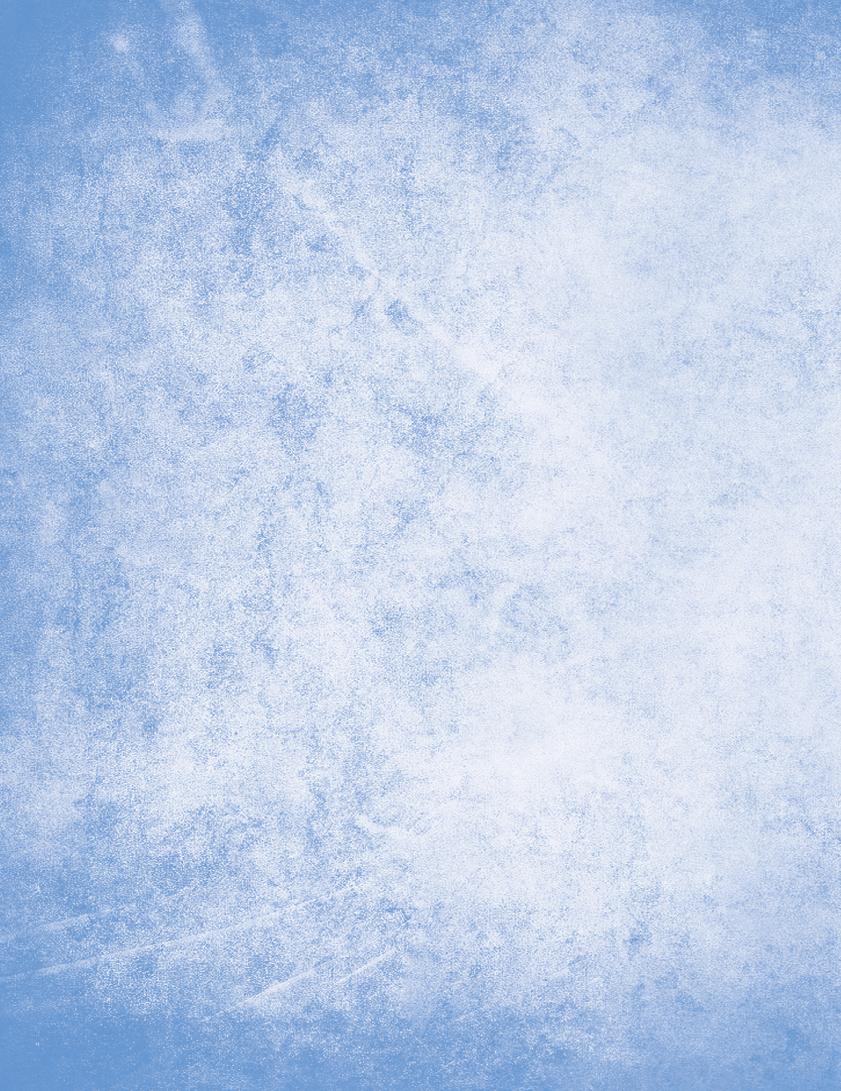
Radiated tortoises live in a narrow strip of desert-like conditions in southern Madagascar. Their landscape is harsh, hot, rocky, and dry. The humidity of our summer and the cold, wet winter soil can be the death of many arid plants. When designing a habitat for the radiated tortoises, we needed to find plants that could endure our wet air and soil. To mimic the stunted, scraggly trees of southern Madagascar, we planted Olive, Olea sp., that are native to the Mediterranean region. This may sound strange as many Mediterranean species do not like our humidity, but we have found that olives work well in containers and in-ground in Columbia. We also planted the sand live oak, Quercus geminata. This smaller version of the live oak perfectly mimics the trees of Madagascar. Grass species are ubiquitous around the world, and it is easy to find stand-ins for the grasses of Madagascar. We used Bamboo muhly grass, Muhlenbergia Dumosa, for its fountain-like growth. The tortoises can get under the grass for shade but can still be visible to visitors. Yucca species work well in Columbia and are easy to find. We used Yucca recurvifolia, Yucca rigida ‘Blue Sentry’, and Yucca rostrata to give the exhibit a dry, arid feel. Also, planted to the side and back of the exhibit are several Hibiscus syriacus cultivars. Although hibiscus is not found in southern Madagascar, the tortoises love to eat the flowers, and the keepers asked that we plant some near the tortoises to provide a tasty treat in the summer.
Burmese mountain tortoises have a completely different range and habitat than radiated tortoises. They are found in coastal forests in Myanmar, Thailand and India. These forests have a very tropical feel with many large-leafed trees and small shrubs. One of the key plants in this new habitat is the big-leafed magnolia, Magnolia macrophylla, which will grow to be a small tree and eventually provide shade for these shade-loving tortoises. Other features of their native forests are palms and grasses, so we used mule palm, x Butyagrus nabonnandii, and saw palmetto, Serenoa repens, as hardy stand-in palms. Lomandra, Lomandra longifolia, is a dark-green evergreen grass that also has a forest feel. Burmese mountain tortoises also love hibiscus, so there are a few planted in their habitat for treats.
The new tortoise habitats are freshly planted and need some time to grow to reach their full potential. We are excited to provide these two critically endangered animals with homes where they can thrive. We hope you will enjoy observing them in their new digs!
RIVERBANKS ZOO & GARDEN2

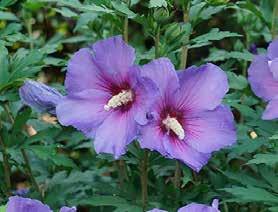

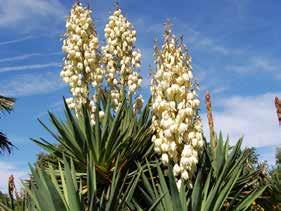
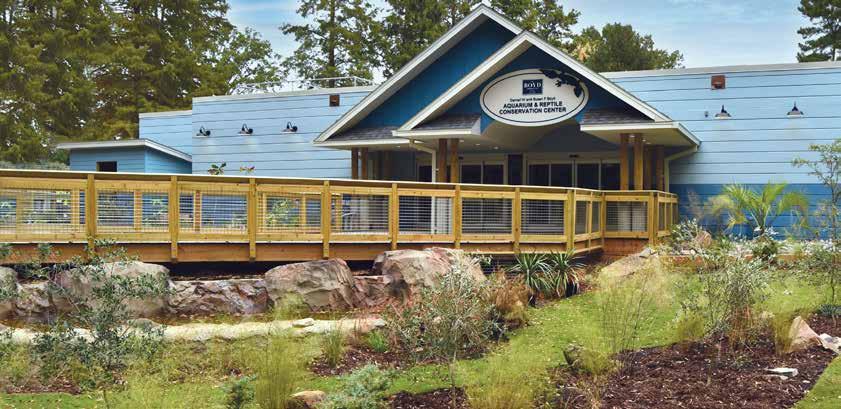
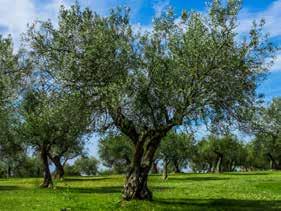





CREATING CONNECTIONS. INSPIRING ACTION. IMPACTING CONSERVATION. 3 HIBISCUS BIG-LEAFED MAGNOLIAYUCCA RECURVIFOLIA OLIVE SAND LIVE OAK BAMBOO MUHLY GRASS SAW PALMETTO LOMANDRA GRASSMULE PALM
SHOP WILD This Holiday Season
For the Family Who
Likes (Or Needs) to Get Out
Give a year full of wild adventures with Riverbanks membership. With free daytime admission, a free visit to Lights, guest passes, discounts, plus a whole lot more, you’ll have your gift recipients cheering with delight!


For Someone Wild about Wildlife
Wild Parent sponsorship helps support the preservation of your favorite species while providing mental and physical enrichment for the animals, a critical component to high-quality animal care.

Quantities are limited. Order by December 2 to ensure Christmas delivery.

4 MISSION POSSIBLE
HOLIDAY GIFT IDEAS
For Individuals Who Favor Flexibility
Riverbanks’ gift cards are super stocking stuffers and perfect for those who prefer picking their own pastimes. Good on-site only for tickets, attractions, tours, membership, concessions and retail. Gift cards can be re-used throughout the year by adding cash value at any time. Pick up a gift card at the Guest Relations Center or Riverbanks Gift Shop.
For the Loved One Who Has Everything

Celebrate family members or friends with a lasting message on a 4”x8” engraved tribute brick, available for a donation of $200. A paperweight replica of your brick is available for an additional $40. Order by December 7 to ensure a certificate of engraving arrives before Christmas.

For the Shopper Who Prefers to Browse in Person
Stop by the Riverbanks Gift Shop for an assortment of animalthemed toys, decor and Riverbanks clothing—Zoo members receive a 10% discount!


5CREATING CONNECTIONS. INSPIRING ACTION. IMPACTING CONSERVATION.
VISIT RIVERBANKS.ORG FOR MORE WILD GIFT IDEAS!
SAVING THE JEWEL OF AFRICA
 Rachael Bashor | VP of Mission Engagement & Director of Education
Rachael Bashor | VP of Mission Engagement & Director of Education
Once considered the jewel of Africa for wildlife viewing, Murchison Falls National Park (MFNP) in Uganda is home to some of the most diverse and beautiful wildlife species. The park was established in 1952 and has become important to the conservation of species, bringing in significant tourism dollars that support the country’s conservation efforts and local economy.
In 2021, the International Elephant Foundation sought support from the Satch Krantz Conservation Fund to expand park management with the construction of a new ranger post in the Buligi area on MFNP. Specifically, there was a 30 kilometer stretch along the Delta and lower River Nile that had been unprotected by Uganda Wildlife Authority due to a lack of ranger facilities. This unprotected area allowed access to the Delta resulting in large scale illegal fishing and poaching. Literally thousands of snares were being set monthly, killing many animals and severely injuring elephants, giraffes and lions.
Riverbanks responded with financial support, and the construction of the Buligi Marine Ranger Station is complete and now operational. Construction of the 4-man ranger station and boathouse took six months. Through the construction, youth from communities adjacent to the park contributed to the project as a training and employment opportunity. As in past ranger station construction at MFNP, snares were buried in the concrete slab removing them from circulation.

Investments in the foundation of park management can have a profound impact on the conservation of species. The impact of new ranger stations in other areas of MFNP have been evident in recent aerial surveys. Increased numbers and expanding distribution of Rothschild’s giraffes, elephants and other animals have been observed. We anticipate that the Buligi Marine Ranger Station will have similar success.
Progress is being made in addressing threats to wildlife. Thanks to our many supporters, Riverbanks Zoo and Garden is pleased to be able to aid the International Elephant Foundation and the brave men and women who risk their lives as wildlife rangers.

6 RIVERBANKS ZOO & GARDEN INTO THE WILD
You can support projects like this through the Riverbanks Satch Krantz Conservation Fund. Visit riverbanks.org and donate today.

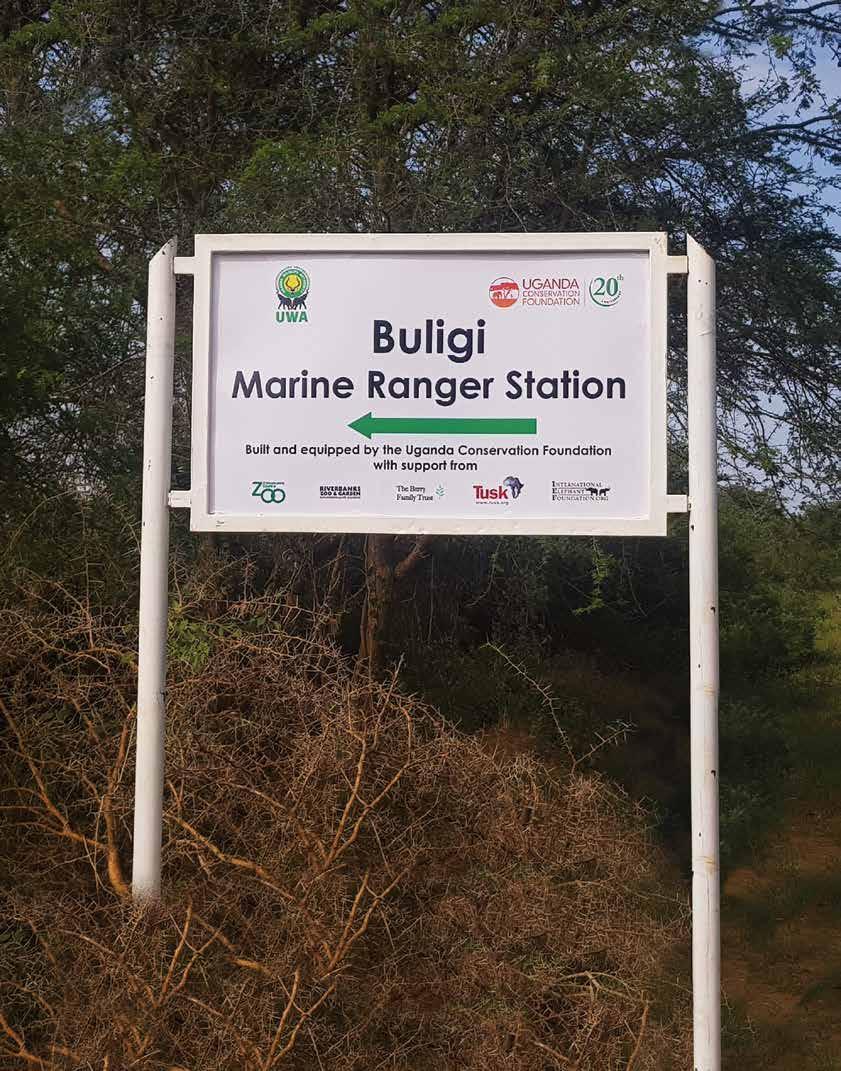
7CREATING CONNECTIONS. INSPIRING ACTION. IMPACTING CONSERVATION.
SUSTAINABLE Soirées

HOW RIVERBANKS CREATES ECO-FRIENDLY FUN
Amanda Schlegel | Donor Engagement Specialist
When most of us think of our next fun-filled trip to the Zoo, we picture a sunny afternoon visiting the wild inhabitants or getting lost in the beauty of the Botanical Garden. However, the mission does not stop once the sun goes down and the day’s guests have gone home. Riverbanks’ after-hours events serve the primary purpose of raising critical funds to protect the plants and animals in our care, but also allow the Zoo to entertain guests with an eye towards sustainability and conscientious use of resources. We talked with Stacy MacGregor, Director of Marketing, about the steps her team takes to (responsibly) create the magic behind the scenes.
MISSION POSSIBLE 8 RIVERBANKS ZOO & GARDEN
How do the signature events at the Zoo and Garden contribute to Riverbanks’ mission?


Our signature events provide opportunities for Riverbanks to raise funds in support of crucial Zoo operations that go far beyond animal care. The scale of these events allows Riverbanks to create jobs for our community. Hosting events allows us to create educational experiences for guests to learn about the role conservation and sustainability impact not only Riverbanks but the wildlife community around the globe.
What steps does your team take to provide an exciting guest experience while focusing on sustainability?
Eighty percent of our event lighting is LED, which means less waste and more efficiency, a huge step when you look at events like Boo at the Zoo and Lights. We also only distribute palm-oil free candy for Boo at the Zoo to help prevent deforestation. When crafting events, our catering teams provide compostable plates, cutlery, and drinkware. All possible steps are taken to reduce and recycle with a goal of zero waste for future events.
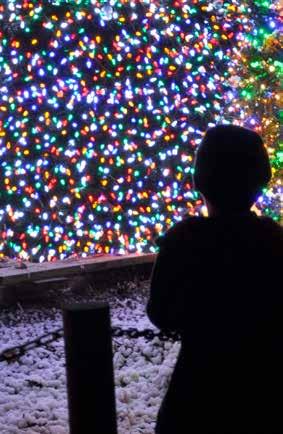
Speaking of future events, what green initiatives are you excited to incorporate in upcoming events?
I am looking forward to being even more intentional with our signature events by including more opportunities for recycling, composting food waste, and reducing our reliance on non-recyclable items, as well as investing in more energy saving lighting and décor. Our conservation committee is beginning to meet again and conversations about making the Zoo more sustainable as a whole are underway. We are also working on building more social messaging around the importance of conservation, how our community can be more active, and building awareness about the impact that taking these important steps can have on our wildlife and environment.
After the party is over, what can guests do to implement these measures at home?
Guests can be mindful of waste produced in their homes, purchase post-consumer recycled goods, and use LED and energy efficient items. It is also important to be aware of the wider environmental impact of ingredients in commonly used items and buy organic when possible. The key is to make your recycling containers larger and landfill bins smaller! For those who enjoy getting outdoors, creating gardens that support our pollinators and provide shelter for our local wildlife and bird populations will go a long way. There are so many simple ways to make an impact, and we look forward to sharing our green innovations during future events!

9CREATING CONNECTIONS. INSPIRING ACTION. IMPACTING CONSERVATION.
Add Some Wild Adventures To your Visit
Little Learners gives our youngest guests and their families the chance to learn about the flora and fauna around them.

Thank You

We are the Zoo because of YOU

Families with older children can have a Backstage Encounter with some of our beloved animals.
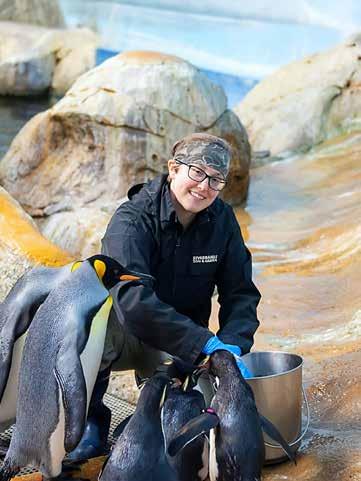
Visit riverbanks.org to register.

10 RIVERBANKS ZOO & GARDEN





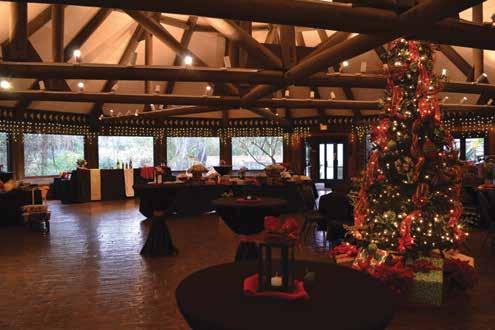
















CREATING CONNECTIONS. INSPIRING ACTION. IMPACTING CONSERVATION. Saturday, November 19 5:00pm-9:00pm|Ndoki Lodge HAND-CRAFTED ITEMS Jewelry|Artwork|Clothing|and More! 10% of all sales benefits Riverbanks’ Chapter of the American Association of Zoo Keepers. For more information about AAZK, please visit: www.colakeepers.com Entry to the craft fair is FREE with paid admission to Lights Before Christmas. Holiday Craf t Fair GET IN GEAR Specialty License Plates Now Available Search for Riverbanks in the Plate Gallery at scdmvonline.com T (803) 602-0900 E PlanYourEvent@Riverbanks.org W Riverbanks.org/PlanYourEvent Phone - (803)-602-0900 Email - PlanYourEvent@Riverbanks.org Website - Riverbanks.org/PlanYourEvent Unique venues for every occasion Save money & time with inclusive event packages Proceeds support conservation efforts Capacities from 25 to 5,000 Exclusive on-site catering & bar service Full park rental HOLIDAY | WEDDINGS | CORPORATE | PICNICS | SOCIAL PERFECT FOR ANY OCCASION
Bringing Japanese Maples to Your Garden
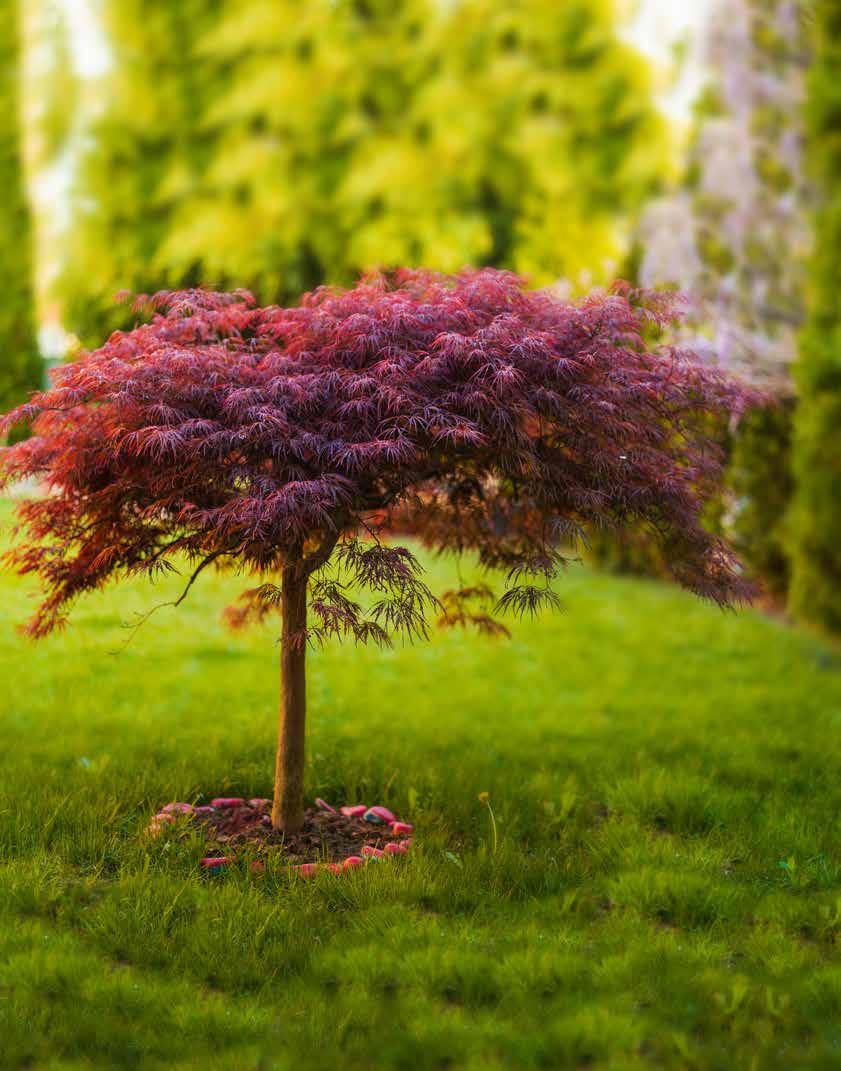 Josh Isenhoward | Horticulturist
Josh Isenhoward | Horticulturist
To the east of China and Korea lie a group of islands known as Japan. The Japanese people call it Nihon (日本), meaning literally the origin of the sun, which gave rise to the popular description of Japan as “the Land of the Rising Sun.” While the Japanese may believe their islands are the origin of the sun, it is well known to gardeners and horticulturalists the world over that Japan is the origin of many of our favorite plants.
One of the most striking plants that these islands gave rise to is the Japanese maple. For three centuries the Japanese have been carefully developing and selecting different maples for their beauty, form and color. Through selection and cross-pollination over 250 different cultivars have been produced that will make a striking addition to any garden.
RIVERBANKS ZOO & GARDEN12 DIGGING DEEPER
Japanese maples are some of the most flexible specimens for garden use. They make wonderful accent plants, can be used in shrub borders, groupings, and even bonsai. They bring a certain magic and artistic quality to any landscape.
Caring for them once they are established is relatively easy. Considering the heat and humidity we experience in South Carolina, Japanese maples do considerably well here.

Personally, I have five in my front yard, which are all in full sun. Though they prefer at least partial shade I have found that during the hottest months of the summer I will give them a good drink of water early in the morning and another drink in the evening. I tend to avoid watering them during the afternoon when the sun is at its most brutal as this has caused some leaf scorch.
Newly planted maples will require more attention, but once established I have found them quite resilient to stress in later years. A nice mulch is also very helpful to keep the roots moist. Be careful as well that they do not become waterlogged, which can be just as harmful as underwatering. Though this is mostly a concern with container-grown maples, any maples in containers will require good drainage.
Japanese maples are not greedy specimens when it comes to fertilizer. If you have no real issue growing other plants in your garden, then you should have no issue. But if you do have poor soil, a complete garden fertilizer, such as that recommended for roses, is best applied in the early spring.
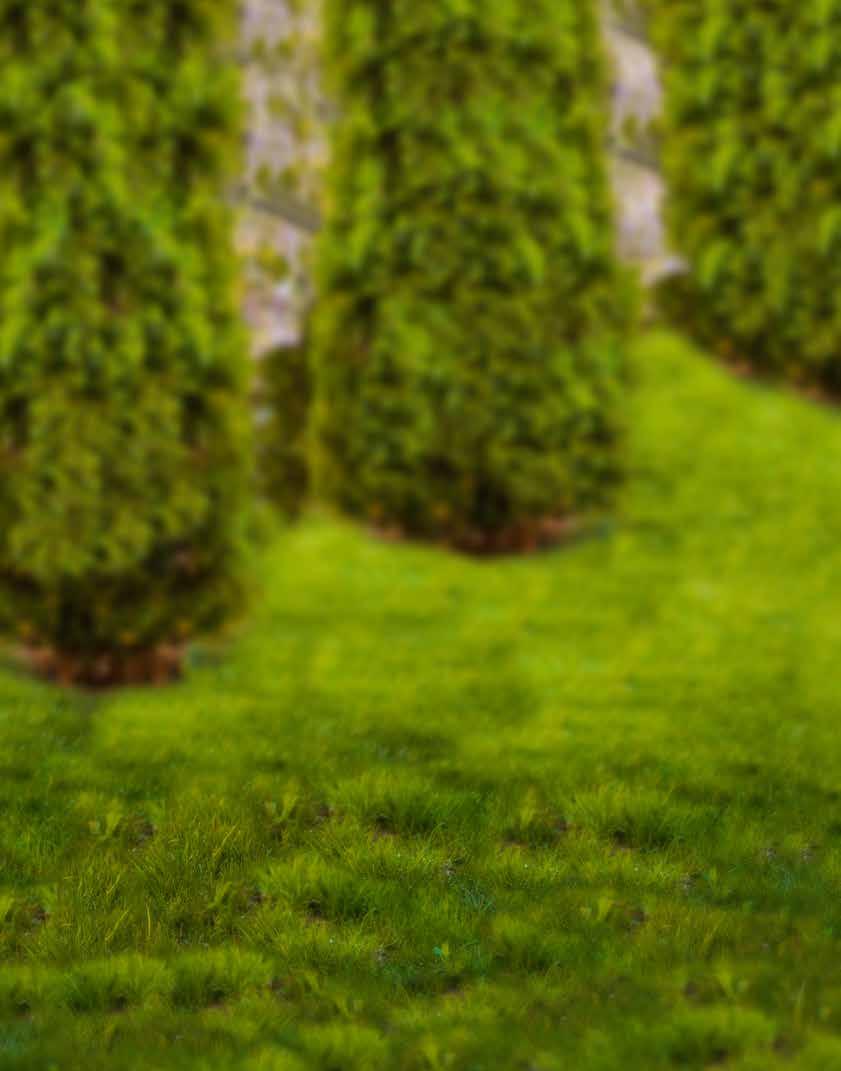
The only major task that Japanese maples require is pruning. Their branches tend to grow into each other. While this is not a hazard to the tree, it can affect its overall appearance. Unless you have a desire for a large tree and have a large area for it, pruning should be done early in the life of the tree. Any major pruning should be done in the dormant season after the tree has lost its leaves, from late November to January. This allows you to see the entire branching structure without the leaves.
Corrective pruning can be done at any time of the year, which can be helpful once the leaves return, and you can see the tree in its full majesty. A pair of sharp and clean pruning shears will be necessary. The first step is to look at the tree and see where branches are growing into each other. When removing a limb, cut at an angle just above the branch collar (the line or ridge where the branch meets the other branch). This is more of an art than a science, which is why it’s important to have an overall image in your mind of what you want your Japanese maple to look like. After pruning a couple of branches, it is always good to take a step back from the tree to see how it’s going and what you will need to prune next.
For their sheer breadth of variety, size and beauty, Japanese maples are one of the most beautiful and elegant plants that can be added to your garden. From Zen gardens in Kyoto to the royal botanical gardens in London and even at Riverbanks Zoo and Garden, Japanese maples can be found the world over and have been enjoyed for centuries.
Japanese maples are one of the most beautiful and elegant plants that can be added to your garden.

13

ANIMAL SPOTLIGHT Endangered Critically Endangered Extinct in the Wild Near Threatened VulnerableLeast Concern Jennifer Rawlings | Aquarium Curator 14 RIVERBANKS ZOO & GARDEN CONSERVATION STATUS Giant Pacific Octopus Enteroctopus dofleini
Where on Earth?
Coastal habitat, among rocky areas and pilings. Can be found in a wide range of depths, from shallow waters down to 6,000 feet or greater, in the cold, coastal waters of the Northern Pacific: Korea, Japan, Canada, the United States and Mexico.


Measuring Up Arm span of 7 to 13 feet, weighing up to 50 pounds or more
What’s for Dinner?
Crabs, mussels, clams, shrimp, clams, fish and squid Digs at the Zoo
The soon-to-open Darnall W. and Susan F. Boyd Aquarium & Reptile Conservation Center will house the first giant Pacific octopus at Riverbanks in over five years.
Zoo’s Who?
Riverbanks has plans to acquire a giant Pacific octopus. The species is naturally solitary.
Did You Know?
The giant Pacific octopus is highly adapted to its environment and a true master of camouflage. Its skin has the amazing ability to change both color and texture to blend into its habitat. Special cells called chromatophores allow the skin to quickly change color, from very light white to very dark red in a fraction of a second. Additionally, its skin can change texture rapidly, from being completely smooth to frilly and bumpy, to mimic its surroundings.
Weird but True
Planning for a giant Pacific octopus to return to Riverbanks has been exciting! We created a new, larger habitat that has been designed specifically for this species to thrive. The rockwork was designed to give the octopus choice in its environment, whether it wants to approach the window to meet a visitor or hang out in a den for some quiet time. The larger habitat also gives us the opportunity to add other species to the exhibit, such as anemones and sea urchins, thereby providing a very complex environment that more closely resembles that of an ocean-dwelling octopus and provides excellent enrichment.
CONSERVATION CONNECTION
Giant Pacific octopus populations are naturally resilient. Each female octopus can lay an average of 50,000 eggs, and while they don’t all make it to maturity, the populations remain stable. Octopus is a popular food in Mediterranean and Asian diets, and some octopuses are caught as bycatch in Alaskan fisheries. Riverbanks supports responsible seafood consumption and fishing practices by being a Conservation Partner with the Monterey Bay Seafood Watch Program. To learn more about sustainable seafood and how you can support healthy octopus populations, visit seafoodwatch.org and download the app today.
15CREATING CONNECTIONS. INSPIRING ACTION. IMPACTING CONSERVATION.
RESEARCHING RHINOS
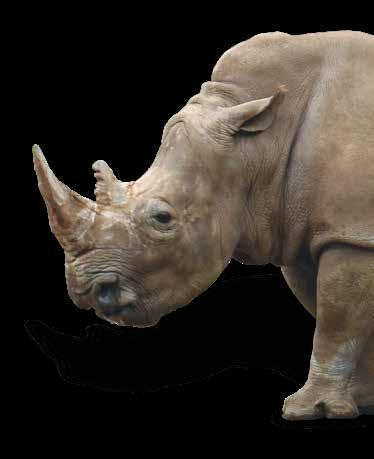 Codyrose Bowden | Hoofstock Keeper
Codyrose Bowden | Hoofstock Keeper

Riverbanks’ rhino crash (group of rhinos) has received a lot of attention over the past few weeks. Bill, Kande and Winnifred have been working hard with their keepers to learn new behaviors. They learned to stand still while a measuring tape moved over them, to have a heart monitor touching their chest, and to present their feet for GPS bracelets to go on their ankles. You might be wondering why there was so much focus on teaching the rhinos these particular things. It was all inspired by a researcher from the AIRS project, who paid a visit to see our rhinos.
AIRS stands for American Institute of Rhino Science, and they are conducting a study on rhinos in zoos nationwide. The goal is to advance knowledge about rhino wellbeing, management and care. For four days, the AIRS researcher, hoofstock keepers and three rhinos worked to collect data. The first task was called the novel object test and required no training at all. The rhinos were each given a brand-new object they had never seen before (a cloth basket), so we could observe their behaviors and reactions. Winnie smashed her basket, but Kande and Bill ignored theirs.
Some Zoo guests may have noticed this study in real time if they saw the rhinos wearing their own “Fitbits.” Each rhino was fitted with a GPS device similar to the fitness tracker to track their activity levels. The crash also had motioncapture cameras set up around their exhibit and barn. For the most part, the rhinos barely seemed to notice this part of the study.

KEEPER CORNER RIVERBANKS ZOO & GARDEN16
After the novel object test and applying “Fitbits,” keepers took measurements of each rhino’s physical shape, from around its belly to the height of its back. Bill, the largest rhino, required a small step stool to reach the top of his shoulder! Data also was collected on body fat and muscle mass. Lastly, the AIRS representative used a heart monitor to check Kande and Bill’s heart rates. She tried to get Winnie’s heart rate as well, but her skin was too thick for a successful reading.
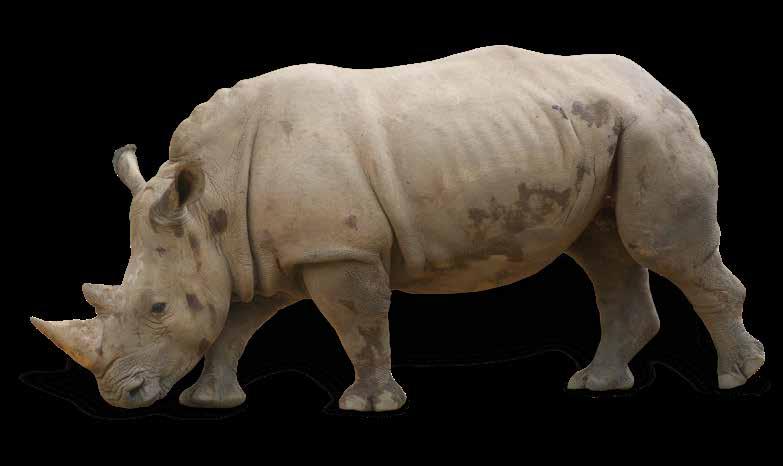

For each of the projects, the rhinos got extra treats and their favorite snacks, the keepers got to spend a lot of time with the rhinos, and the researcher got good data; everyone had a great week! The researcher will return later this year to gather more data. Riverbanks is proud to be participating in such an important study. And it’s extra special knowing that our rhinos, alongside other rhinos in the US, are helping improve the lives of rhinos everywhere.

CREATING CONNECTIONS. INSPIRING ACTION. IMPACTING CONSERVATION. 17
STAY TUNED FOR UPDATES ON THIS IMPORTANT RESEARCH
DON’T KID AROUND


18 RIVERBANKS ZOO & GARDEN ROUNDS WITH THE VET
when it comes to caring for our goats
Martha Weber, MPH, DVM, DACZM, DACVPM | Director of Animal Health
WE
Sam, one of our La Mancha goats, was brought to us with the concerns that he was not eating well and was losing weight. It looked like fluid from his rumen (one of his stomachs – ruminants like goats have a complex digestive system) was coming out his nostrils. We anesthetized Sam for a complete exam with radiographs and blood work.
The first thing we noticed when we were working with Sam was that his breath smelled terrible. We examined all his teeth to look for infections or decay, but they were healthy. His lung X-rays were normal, so we knew he didn’t have pneumonia. We concluded that the bad smell was coming from his rumen. In animals like goats and cattle, the rumen serves as a fermentation vat to help the animals get the maximum nutritional value from their food. To work properly the rumen needs a healthy population of bacteria and protozoa (the microflora). Normal rumen fluid doesn’t smell great, but it should not be as unpleasant as the odor we kept getting from Sam as he breathed on us. Changes in the microflora population can happen for many reasons, but we suspect Sam ate something he shouldn’t have and that messed up the balance of organisms in his rumen, leading to abnormal fermentation. The best treatment for this problem is to give the animal a dose of rumen fluid from an animal that is not sick (transfaunation). The recommended volume of replacement rumen fluid for Sam was 3 liters (almost a gallon), which would have been very difficult to collect from another goat.
I reached out to the LaMaster Dairy Center at Clemson University, and they graciously offered to donate rumen fluid from one of their cows. I drove to Clemson and loaded up two large thermoses full of rumen fluid (we wanted to keep the fluid warm to keep the microorganisms alive and happy). When I got back to the Zoo, we brought Sam up to the hospital and lightly sedated him so we could pass a tube down into his rumen. We poured all the rumen fluid down this tube and then let him return to the farm after he recovered from the sedation. The keepers reported his appetite was improving by the very next day, and he has gained over five pounds in weight in the month since the transfaunation. We are so happy to see Sam returning to his normal healthy self!

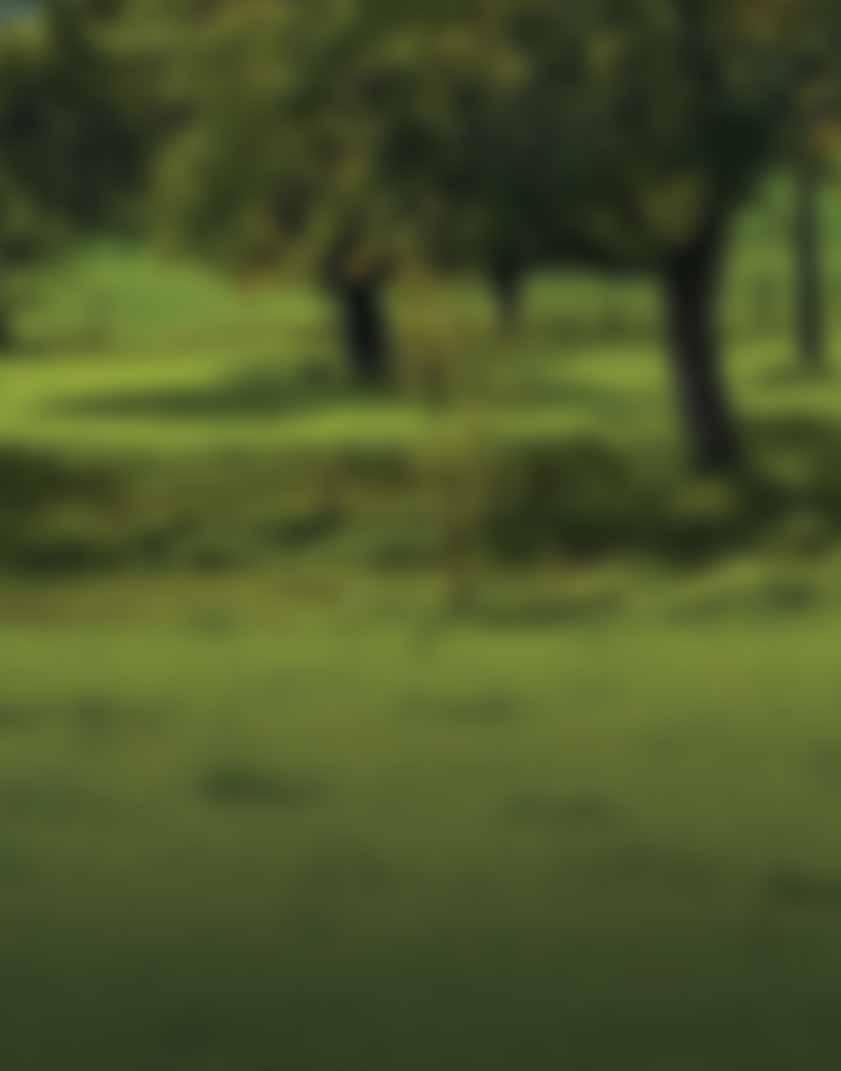
IMPORTANT LIFE LESSON
If you are transporting actively fermenting fluids, do not put them in sealed containers! The gas build-up from the fermentation blew the thermos tops open and now my car smells like rumen fluid. ��
19CREATING CONNECTIONS. INSPIRING ACTION. IMPACTING CONSERVATION.
Zookeepers at Riverbanks Zoo and Garden deliver the highest quality of care to the animals in many different environmental conditions. Penguin keepers work daily within the frigid penguin habitat at 45-degrees Fahrenheit, while the giraffe and rhino keepers routinely work in extreme heat and humidity during the summer months. Animal care also extends below the water’s surface in many of our animal habitats requiring a highly trained team of divers.
The Zoo’s Dive Safety Officer, Casey Fissel, goes to great depths to manage the Riverbanks Zoo dive program and maintain safe working conditions for all those that care for the animals below the water’s surface.
Bubbles break the surface, ripples dancing as they disperse across the water. Light from overhead filters down, a sparkling kaleidoscope scrawling its mesmerizing pattern over the bottom of the tank. A burst of color as fish begin to circle in anticipation of a tasty meal. In the middle of it all, a Riverbanks diver extends a head of lettuce.

IN THE KNOW
RIVERBANKS ZOO & GARDEN
Casey Fissel | Dive Safety Officer with Introduction by John Davis | Director of Animal Care & Welfare
20
Dives, like the one described left, are part of a typical day in the Dive Program at Riverbanks Zoo and Garden. Riverbanks’ Dive Program currently consists of seventeen divers: two Dive Ops divers (Dive Safety Officer and Dive Technician), five aquarium divers, three hoofstock divers, two life support systems divers, one swing diver, and two volunteer divers—and this doesn’t count the five new divers that are in training! As you can see, keepers are a big part of the Dive Program, making up the majority of our divers. Being able to dive allows the keepers to have close interactions with their animals, to monitor behaviors and take note of physical health, as well as maintain the cleanliness and overall condition of the exhibits.
At Riverbanks, we follow commercial dive practices, using a mode of diving called surface supply. Surface supply diving is when the diver receives air from an air source on the surface (SCUBA tank or compressor) via an umbilical line. Along with the umbilical line, we use a full-face mask, which is equipped with a microphone and earpieces that allow the diver to both speak to and hear the dive team on the surface. Though surface supply is our main mode of diving, you will also occasionally see Riverbanks divers participating in breathhold diving. When doing a breath-hold dive, the diver will be equipped with a tethered harness, mask, and snorkel, allowing them to breathe from the surface before holding their breath to briefly do submerged tasks in the tank.
The Dive Program at Riverbanks encompasses four areas of the Zoo including exhibits in the aquarium, the seal and sea lion exhibit, the penguin exhibit, and the otter exhibit. Though each location has a different set of protocols, objectives, and dive styles, three general roles must be filled for a dive to take place. These roles include that of a diver, a tender, and a designated person in charge (DPIC). In some locations, an animal care team member is also required to monitor the behavior of our bigger animals. The role of the tender is to monitor the diver and surrounding conditions, such as weather, air supply, or any other potential hazard that could affect the diver. In the event of an emergency, the tender would be the first to respond. The role of the DPIC is to activate emergency procedures and assist the tender in the extraction of a diver. They are in charge of helping the situation run as smoothly as possible by monitoring the radio, delegating roles of responders, and guiding EMS through the dive location if needed. All of our divers at Riverbanks can fill the role of a responder, as they are all trained on basic life support/first aid, CPR, and the administration of oxygen. They also train throughout the year to be ready to respond in the event of an emergency.
Behind the scenes, our Dive Ops team also has the responsibility of maintaining the gear and equipment used every day. It is the job of the Dive Ops team to service and inspect all equipment to ensure that it is in working order and safe to dive. They handle everything from the full-face masks and regulators to tanks, compressors, umbilicals, and general gear (like wetsuits and gloves).
The main goal of the Dive Program is to provide the highest quality care of the underwater exhibits for our animal inhabitants, while doing so in a safe manner. That being said, we also like to have fun! We are more than happy to engage with guests while doing our work, be it waving, blowing bubbles, or playing rock, paper, scissors. So next time you visit Riverbanks and see a diver in the tank, don’t hesitate to say hello – we’re always happy to see you!
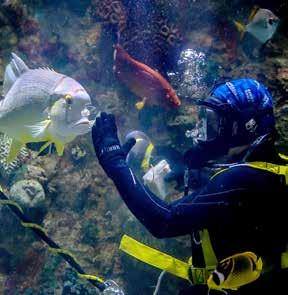


21CREATING CONNECTIONS. INSPIRING ACTION. IMPACTING CONSERVATION.







All Riverbanks Members Receive One Free Visit Member card and photo ID required. Guest passes do not apply. OPENS NOVEMBER 19 Visit riverbanks.org for 2022 schedule RIVERBANKS SOCIETY 500 Wildlife Parkway Columbia, SC 29210-8014 Non-Profit Org. U.S. Postage PAID Columbia, S.C. Permit No. 90































 Rachael Bashor | VP of Mission Engagement & Director of Education
Rachael Bashor | VP of Mission Engagement & Director of Education

































 Josh Isenhoward | Horticulturist
Josh Isenhoward | Horticulturist





 Codyrose Bowden | Hoofstock Keeper
Codyrose Bowden | Hoofstock Keeper

























